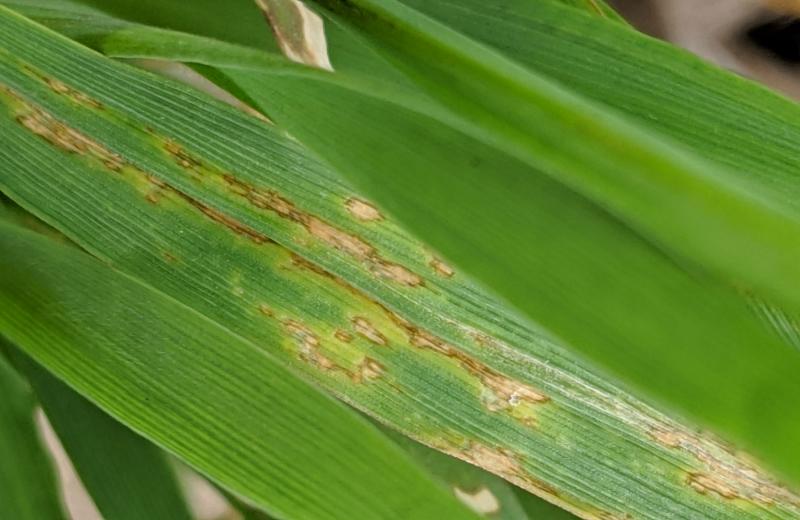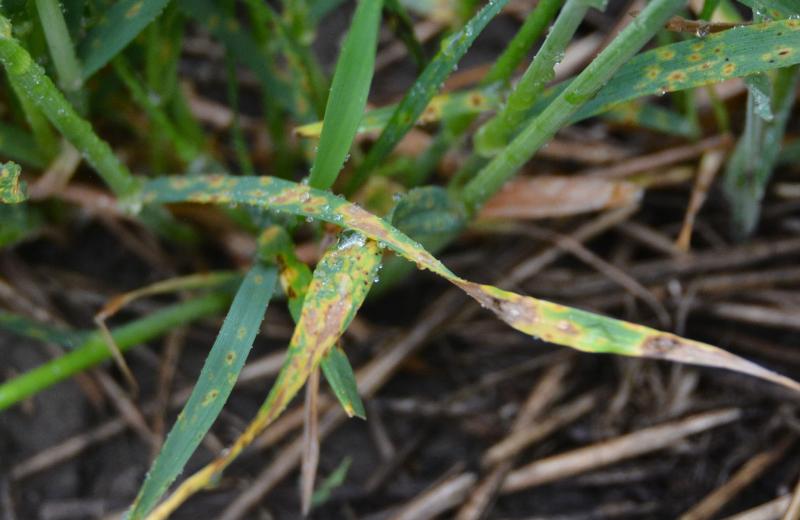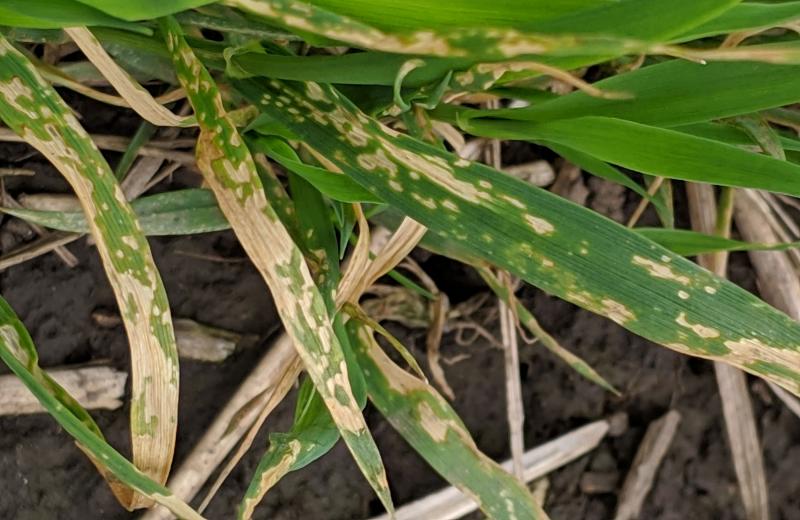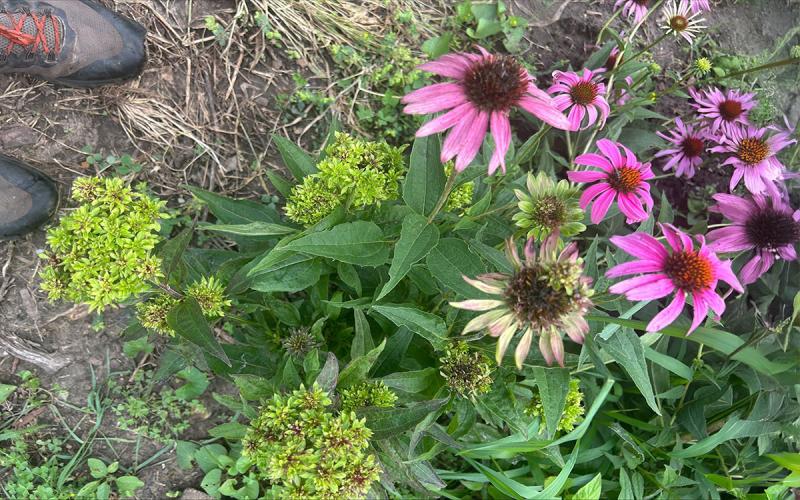Originally written by Emmanuel Byamukama, former SDSU Extension Plant Pathologist.
Recent winter wheat scouting found bacterial leaf blight developing in some fields. Bacterial leaf blight is caused by the bacteria, Pseudomonas syringae pv. syringae. The disease develops under frequent rains between 59 – 77° F. P. syringae pv. syringae is a weak pathogen and disease progress will be curtailed once wheat is exposed to periods of low humidity and warm temperatures (above 77° F).
Symptoms
Bacterial leaf blight symptoms can be confused with tan spot or chemical injury. The photos below illustrate the key differences among these conditions.

Bacterial Leaf Blight
The best way to distinguish bacterial leaf blight from tan spot is to look for water soaking along the lesion margins (Figure 1) .

Tan Spot
Tan spot has a small, dark-brown center surrounded by a yellow halo (Figure 2) .

Chemical Injury
Chemical injury symptoms do not have water soaking or yellow margins, and they tend be uniform on plants in a large area in a field (Figure 3).
Management
As with other bacterial diseases, bacterial leaf blight cannot be managed through application of fungicides. Bacterial leaf blight is a minor disease except where a planted cultivar is highly susceptible.
Scouting and proper disease diagnosis is important for effective disease management in wheat or any other crop. Growers should not rush to apply a fungicide when symptoms are caused by non-fungal pathogens. Growers can mail symptomatic samples that require diagnosis to the SDSU Plant Diagnostic Clinic (SDSU Plant Diagnostic Clinic; SPSB 153, Box 2108; Jackrabbit Dr.; Brookings, SD 57006) or call the SDSU Extension Plant Pathologist at 605-688-4521 or 605-688-5545 for assistance with plant disease diagnosis and management recommendations.

